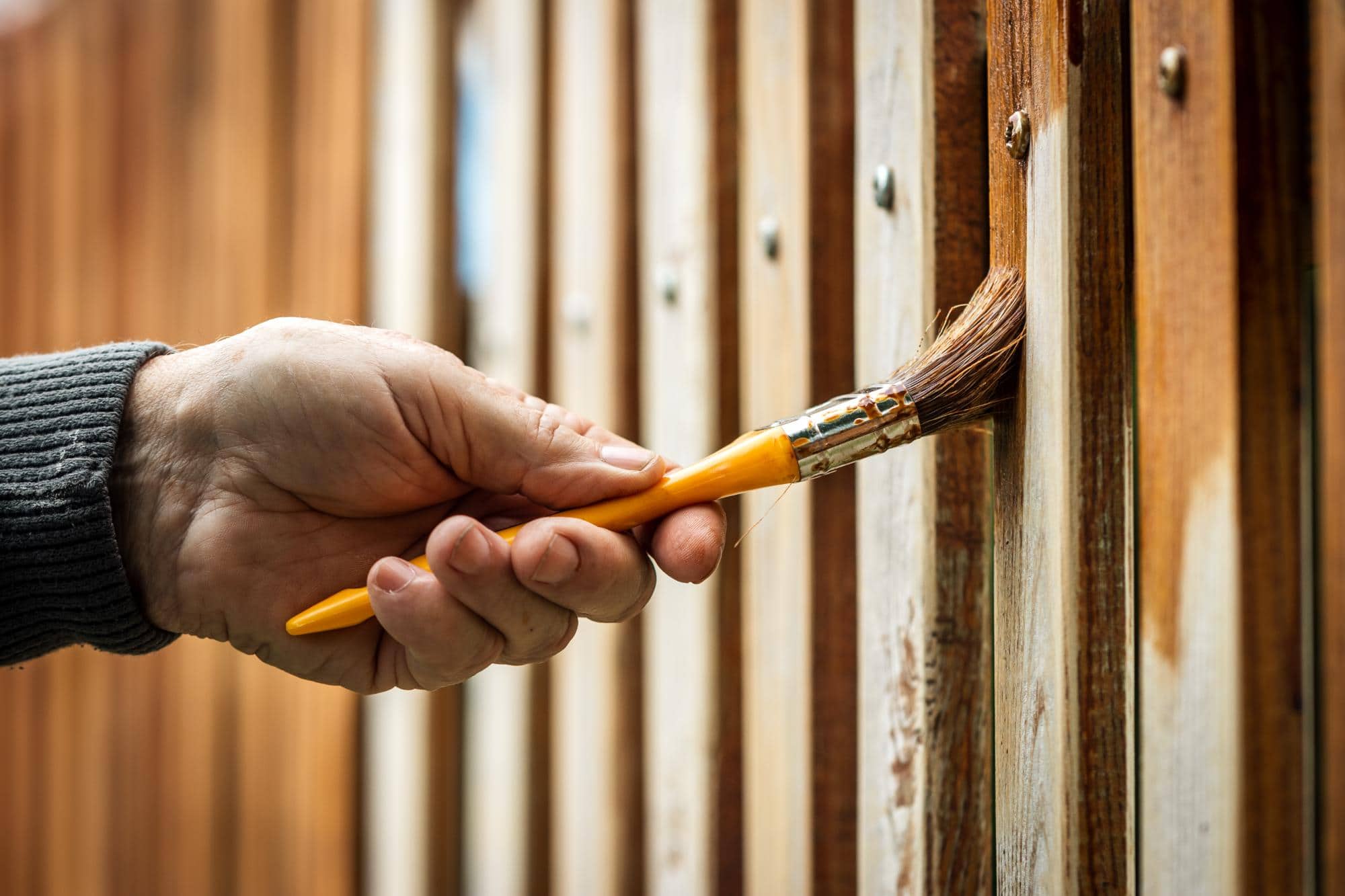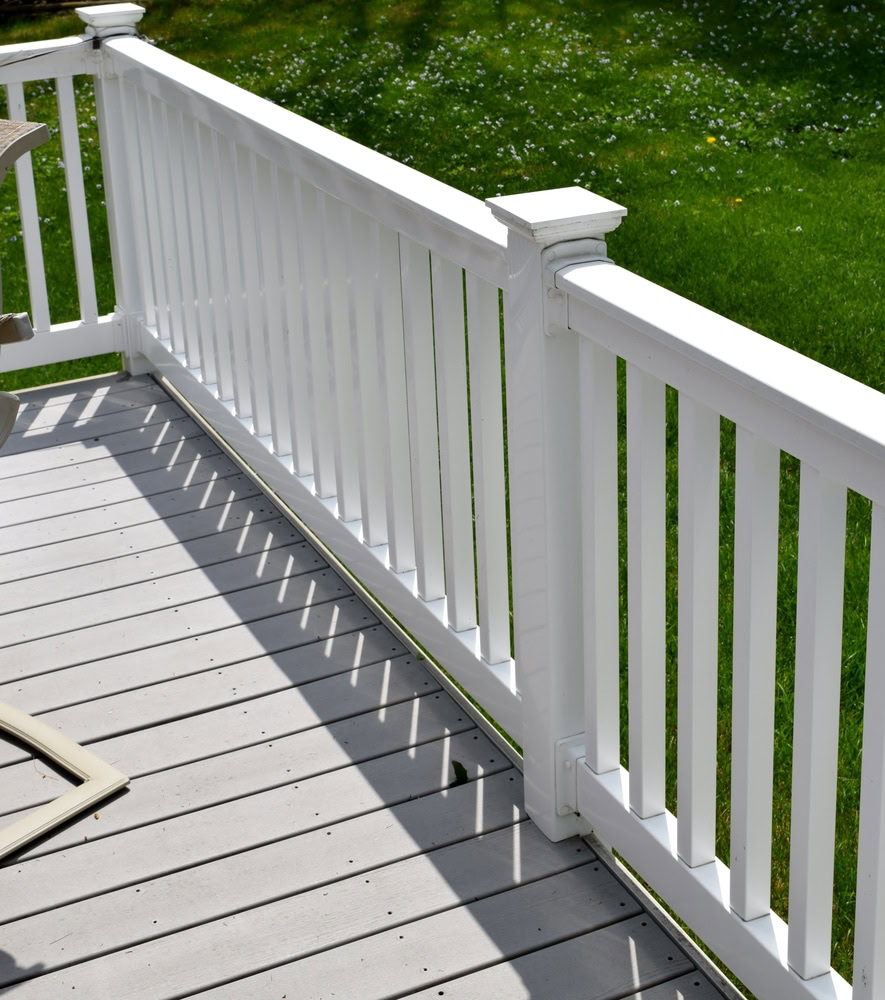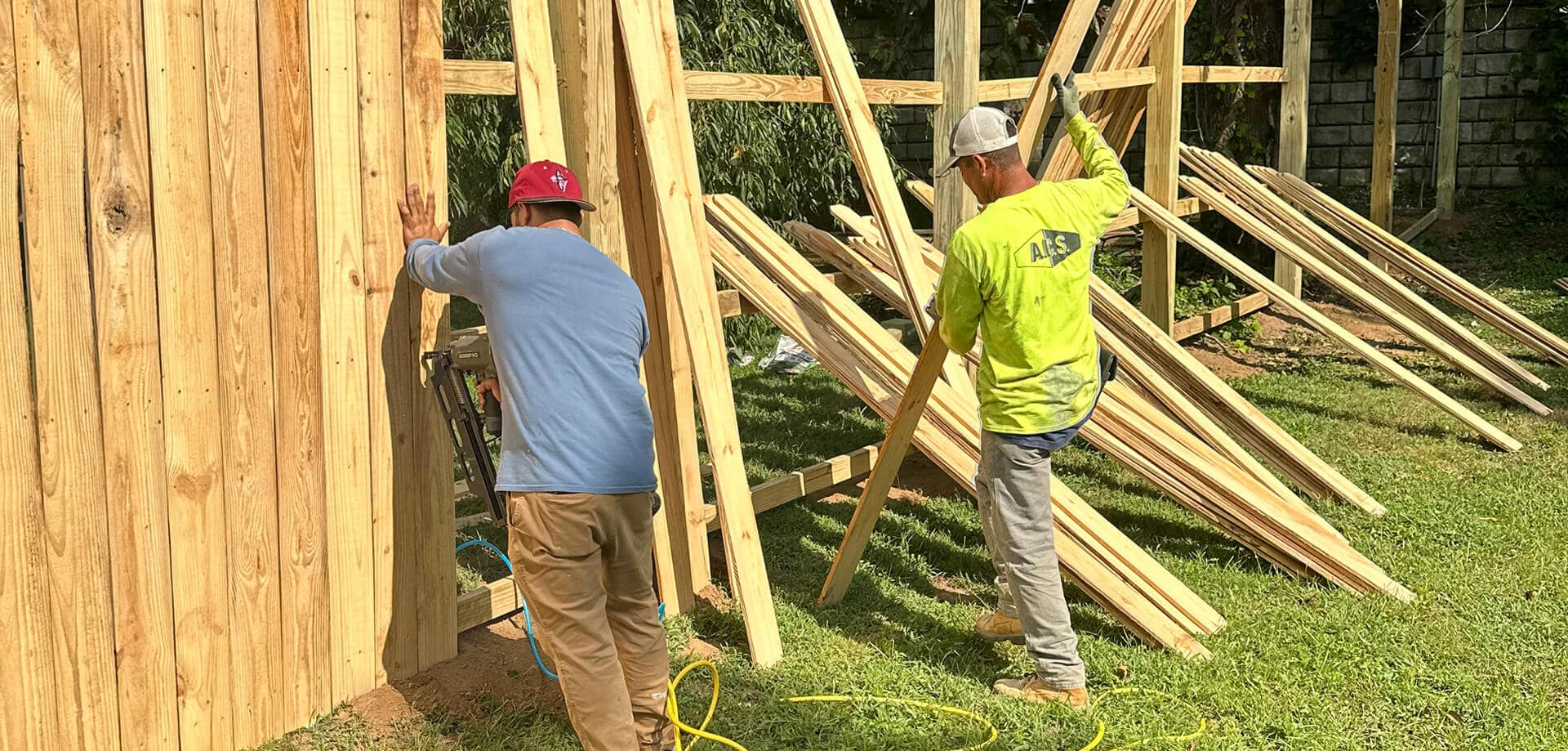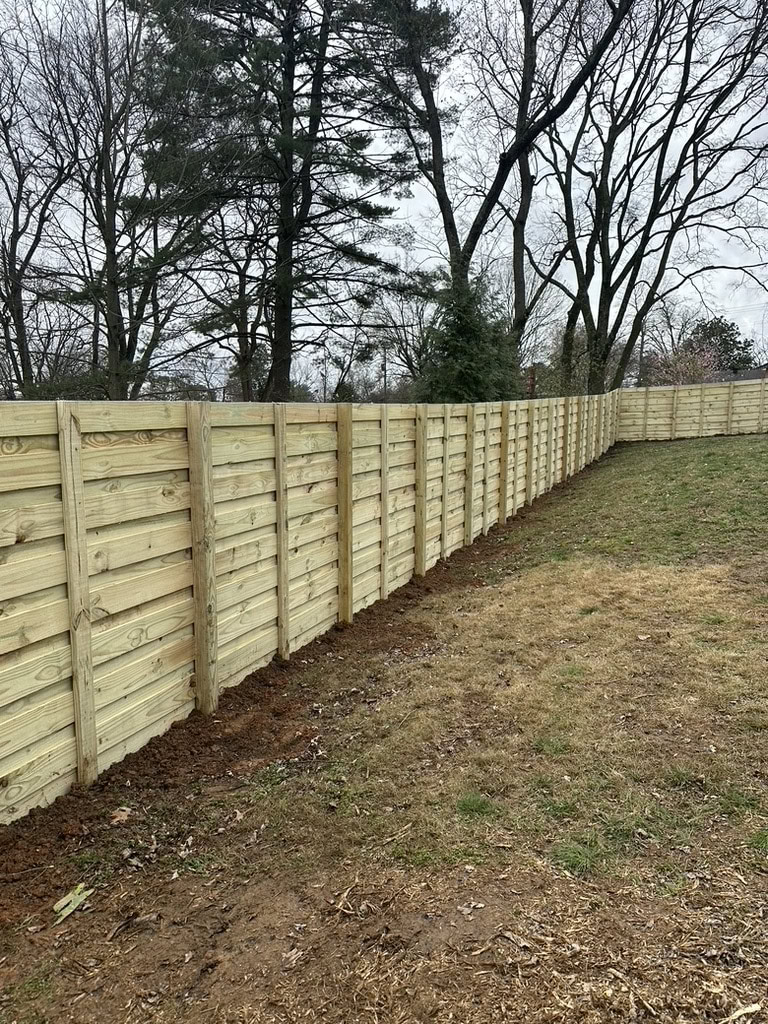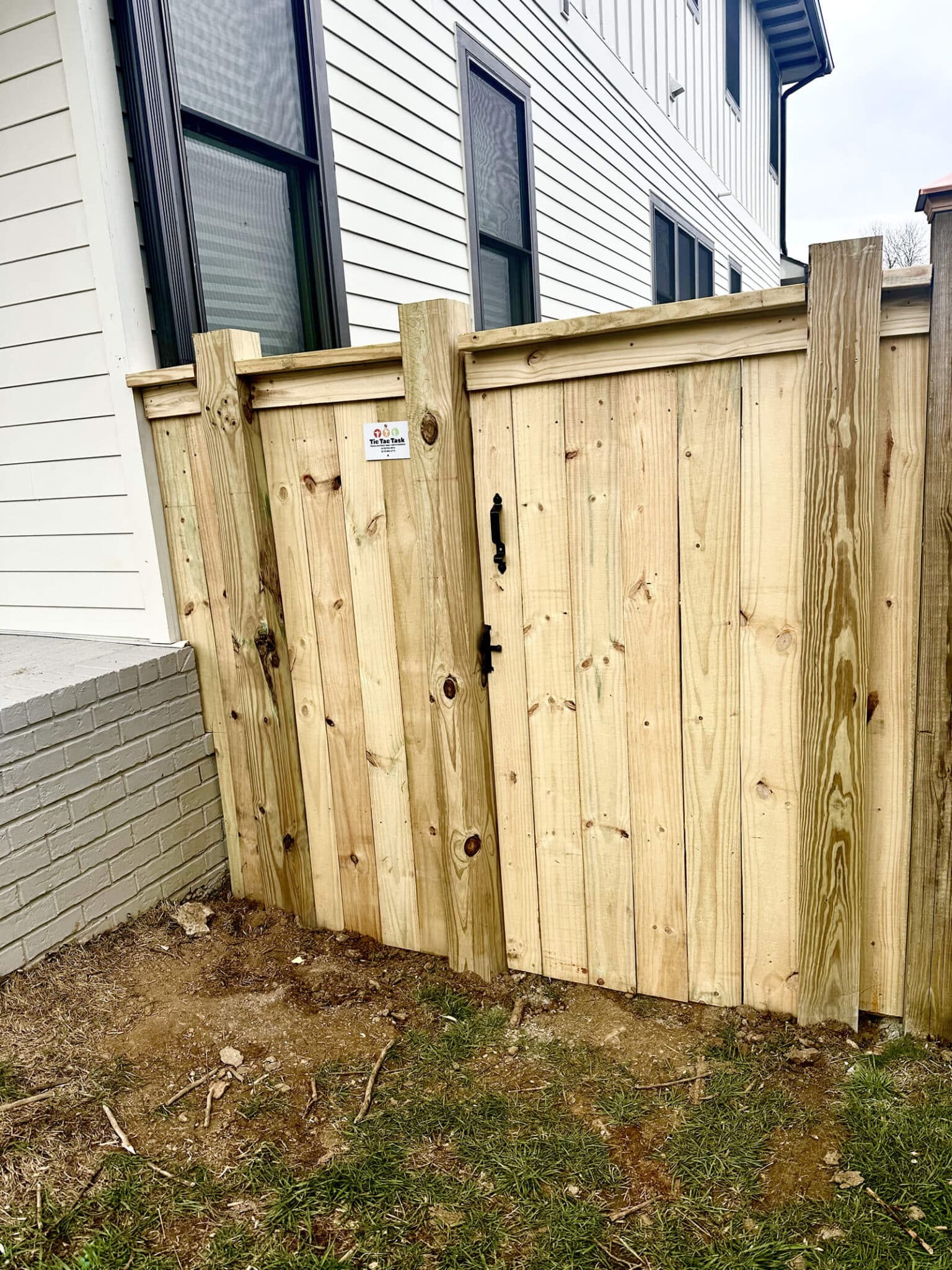Summary:
How Tennessee Weather Destroys Untreated Wood Fences
Tennessee’s climate is particularly brutal on wood fences. The combination of high humidity, intense summer UV rays, and dramatic temperature swings creates the perfect storm for wood deterioration. Without protection, your fence absorbs moisture during humid periods, then contracts and expands as temperatures change.
This constant movement causes the wood fibers to break down, leading to cracks, splits, and eventually rot. Most untreated wood fences in Tennessee start showing serious damage within 2-3 years and need replacement by year 8-10. That’s a lot sooner than most homeowners expect when they’re writing that initial check.
UV Damage Happens Faster Than You Think
The sun’s UV rays break down the lignin in wood—the natural polymer that gives wood its strength and color. This process starts immediately after installation, which is why new fences begin turning gray within months of installation. But the color change is just the visible sign of deeper structural damage happening beneath the surface.
UV damage weakens the wood fibers, making them more susceptible to moisture penetration and insect damage. Once moisture gets into compromised wood, it creates an environment where rot and decay can take hold quickly. Tennessee’s intense summer sun accelerates this process compared to cooler climates.
The gray color you see isn’t just cosmetic—it’s dead wood fiber on the surface. This damaged layer acts like a sponge, absorbing even more moisture during rain or humid periods. Professional wood fence staining creates a UV barrier that prevents this initial damage from occurring.
Most homeowners don’t realize that once wood has turned gray and started to crack, simple staining may not be enough. The surface often needs restoration work before staining can be effective, which adds time and cost to the project.
Moisture Damage Starts Small But Spreads Fast
The sun’s UV rays break down the lignin in wood—the natural polymer that gives wood its strength and color. This process starts immediately after installation, which is why new fences begin turning gray within months of installation. But the color change is just the visible sign of deeper structural damage happening beneath the surface.
UV damage weakens the wood fibers, making them more susceptible to moisture penetration and insect damage. Once moisture gets into compromised wood, it creates an environment where rot and decay can take hold quickly. Tennessee’s intense summer sun accelerates this process compared to cooler climates.
The gray color you see isn’t just cosmetic—it’s dead wood fiber on the surface. This damaged layer acts like a sponge, absorbing even more moisture during rain or humid periods. Professional wood fence staining creates a UV barrier that prevents this initial damage from occurring.
Most homeowners don’t realize that once wood has turned gray and started to crack, simple staining may not be enough. The surface often needs restoration work before staining can be effective, which adds time and cost to the project.
Professional Fence Staining vs DIY: Why It Matters
Most homeowners underestimate what’s involved in proper fence staining. It’s not just about rolling stain onto wood—it’s about surface preparation, product selection, application technique, and timing. We have the experience to handle these variables correctly the first time.
The products available to professionals are also significantly different from what you’ll find at home improvement stores. Professional-grade stains penetrate deeper, last longer, and provide better protection against Tennessee’s specific climate challenges.
Surface Preparation Makes or Breaks the Results
Proper surface preparation is where most DIY fence staining projects fail. Wood that’s been exposed to weather for any length of time develops a layer of dead fiber, dirt, and oxidation that prevents stain from penetrating properly. Simply power washing isn’t enough—the surface needs to be properly cleaned and sometimes sanded to accept stain evenly.
We know how to assess wood condition and prepare surfaces correctly. This might involve specialized cleaning solutions, light sanding, or restoration techniques that most homeowners don’t have the tools or experience to handle. Skipping proper prep work results in uneven stain absorption, blotchy appearance, and premature failure.
The timing of surface preparation is also critical. Wood needs to be completely dry before staining, but not so weathered that it won’t accept stain properly. We understand these timing issues and plan projects accordingly. We also know how to work around Tennessee’s unpredictable weather patterns.
Many DIY projects fail because homeowners rush the preparation phase or don’t understand how different wood species and ages accept stain differently. Cedar, pine, and pressure-treated lumber all require different approaches for optimal results.
Professional-Grade Products Deliver Superior Protection
The stain products available to us as professional fence staining contractors are formulated differently than consumer-grade products. Professional stains typically have higher solid content, better UV blockers, and more durable resins that provide longer-lasting protection. These products are designed for contractors who stake their reputation on results.
We also have access to specialized products for different situations—stains formulated specifically for weathered wood, products that work better in high-humidity climates, and systems designed for maximum longevity. We understand which products work best for Tennessee’s climate conditions.
Application technique is just as important as product quality. We know how to achieve even coverage, proper penetration, and smooth transitions between boards. We have the right tools for efficient application and understand how weather conditions affect the staining process.
Most importantly, we warranty our work. If the stain fails prematurely due to application issues, we’ll address the problem. That’s protection you don’t get with DIY projects, where product failure and application problems become your responsibility and expense.
Protecting Your Fence Investment Long-Term
Professional fence staining isn’t a one-time expense—it’s an investment in your property that pays dividends for years. A properly stained fence can last 15-20 years compared to 8-10 years for untreated wood. That’s potentially saving you thousands in replacement costs, not to mention the hassle of another major fence installation.
The key is working with professionals who understand Tennessee’s climate challenges and use appropriate products and techniques. Regular maintenance staining every 3-5 years keeps your fence looking great and functioning properly for decades. When you’re ready to protect your fence investment properly, we at Tic Tac Tasks LLC have the experience and expertise to deliver results that last.

